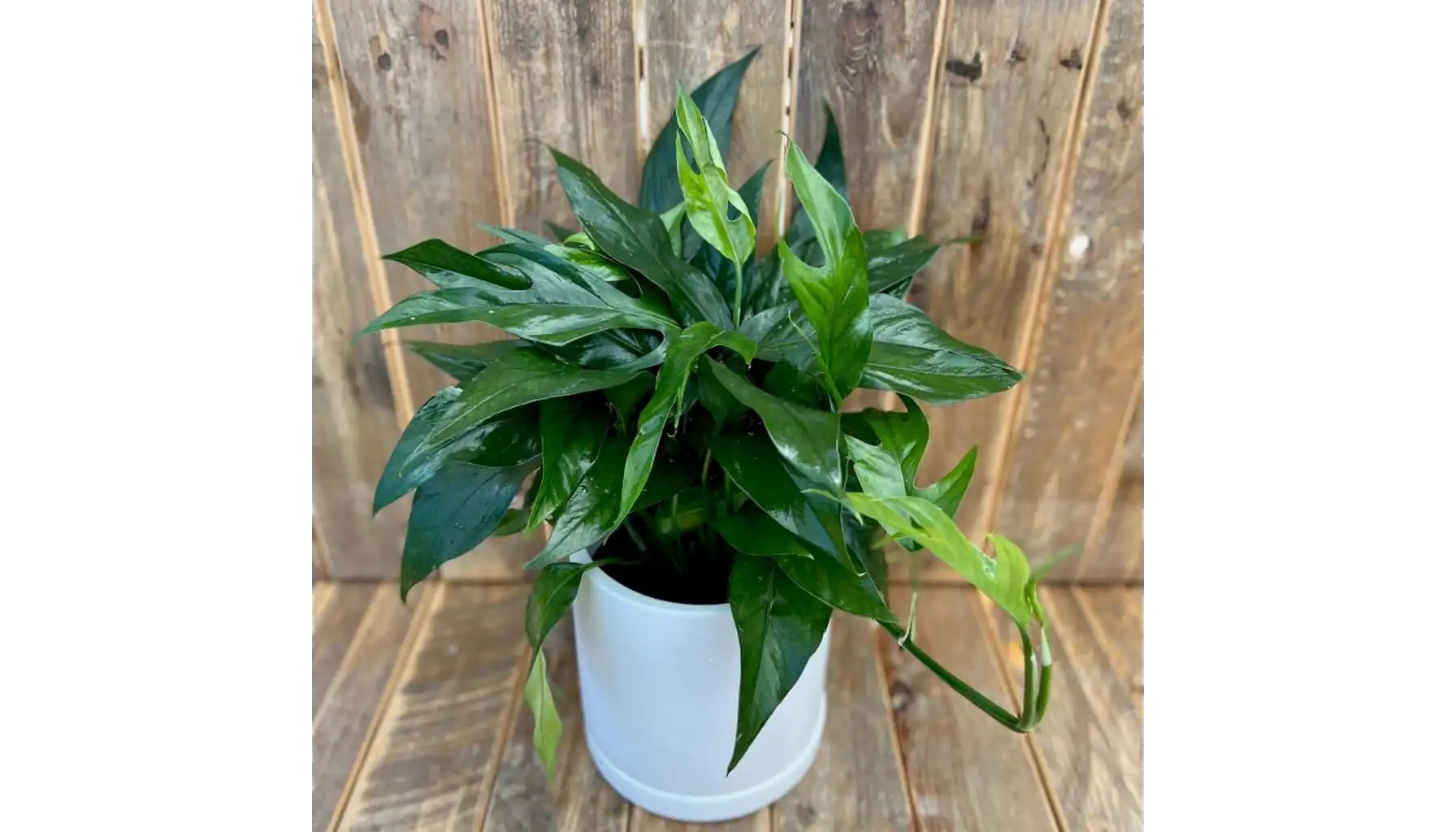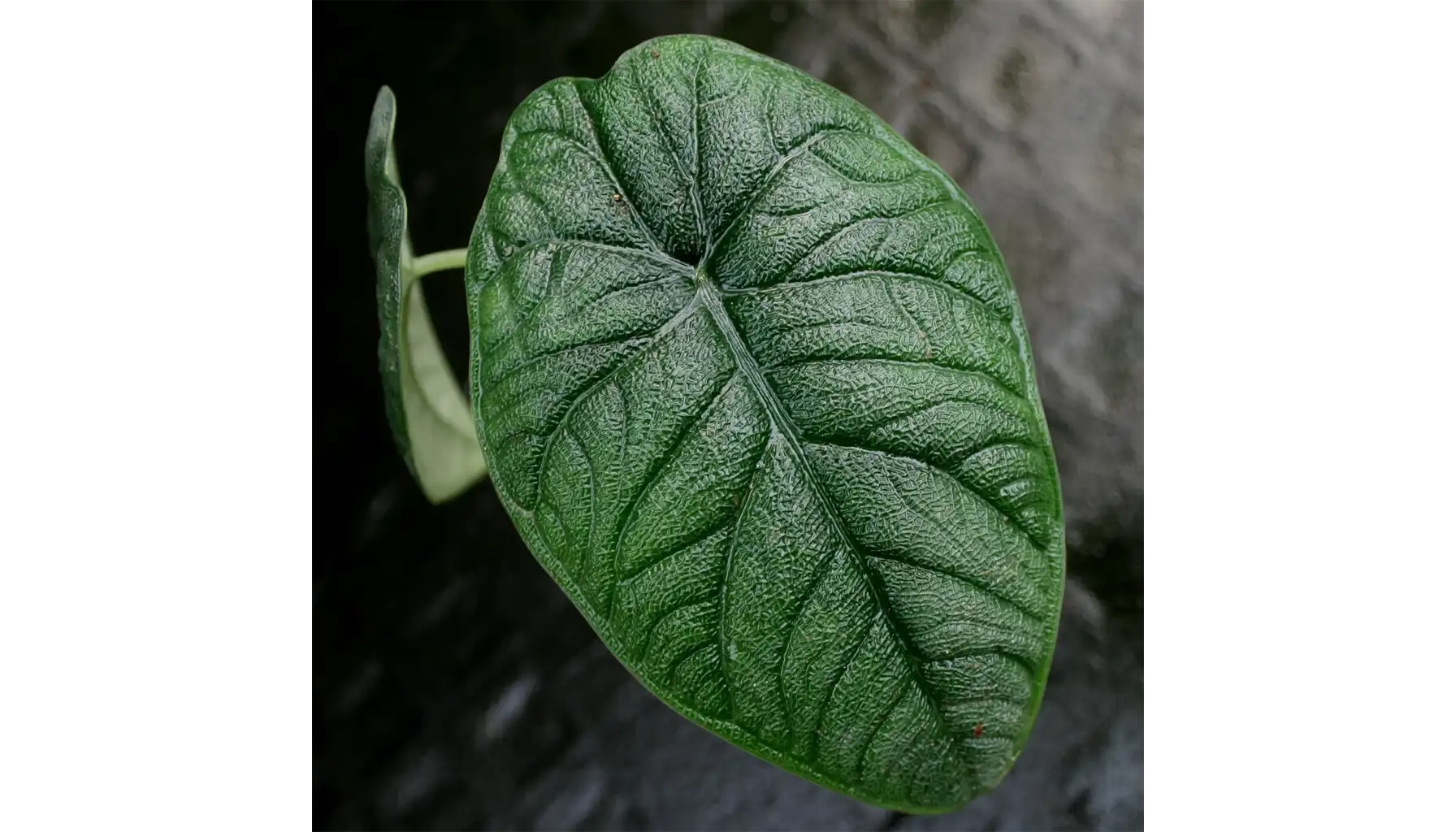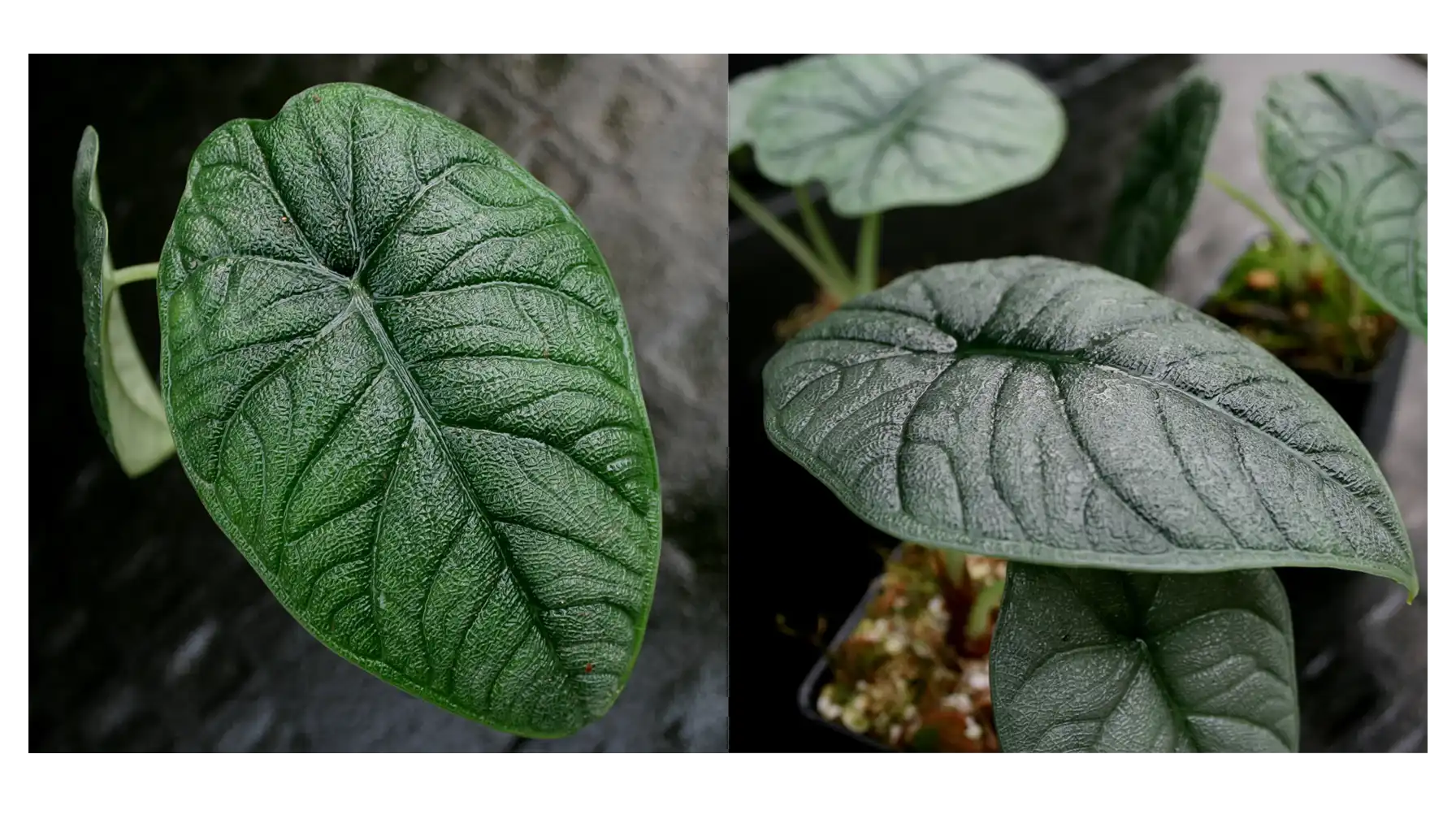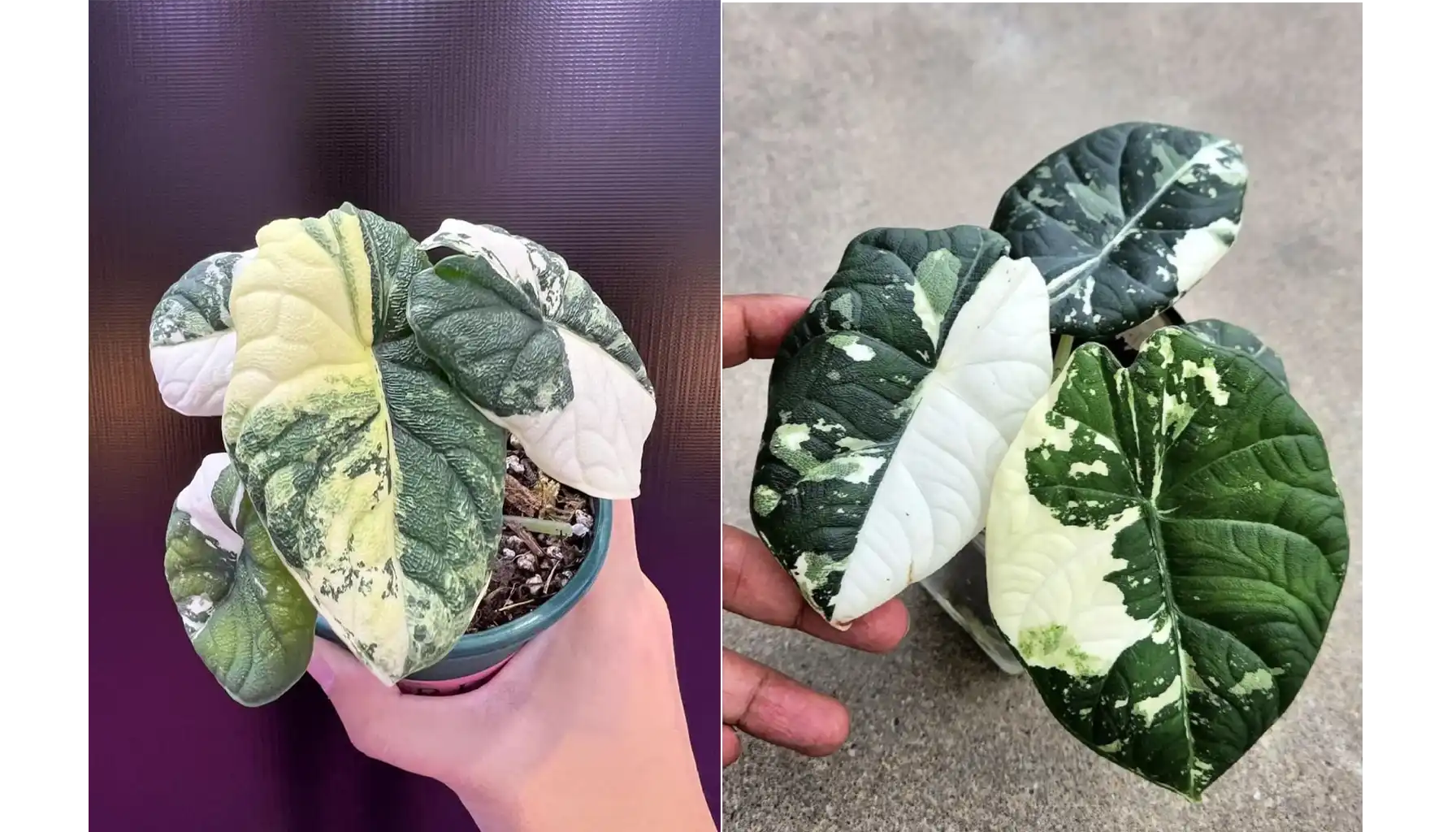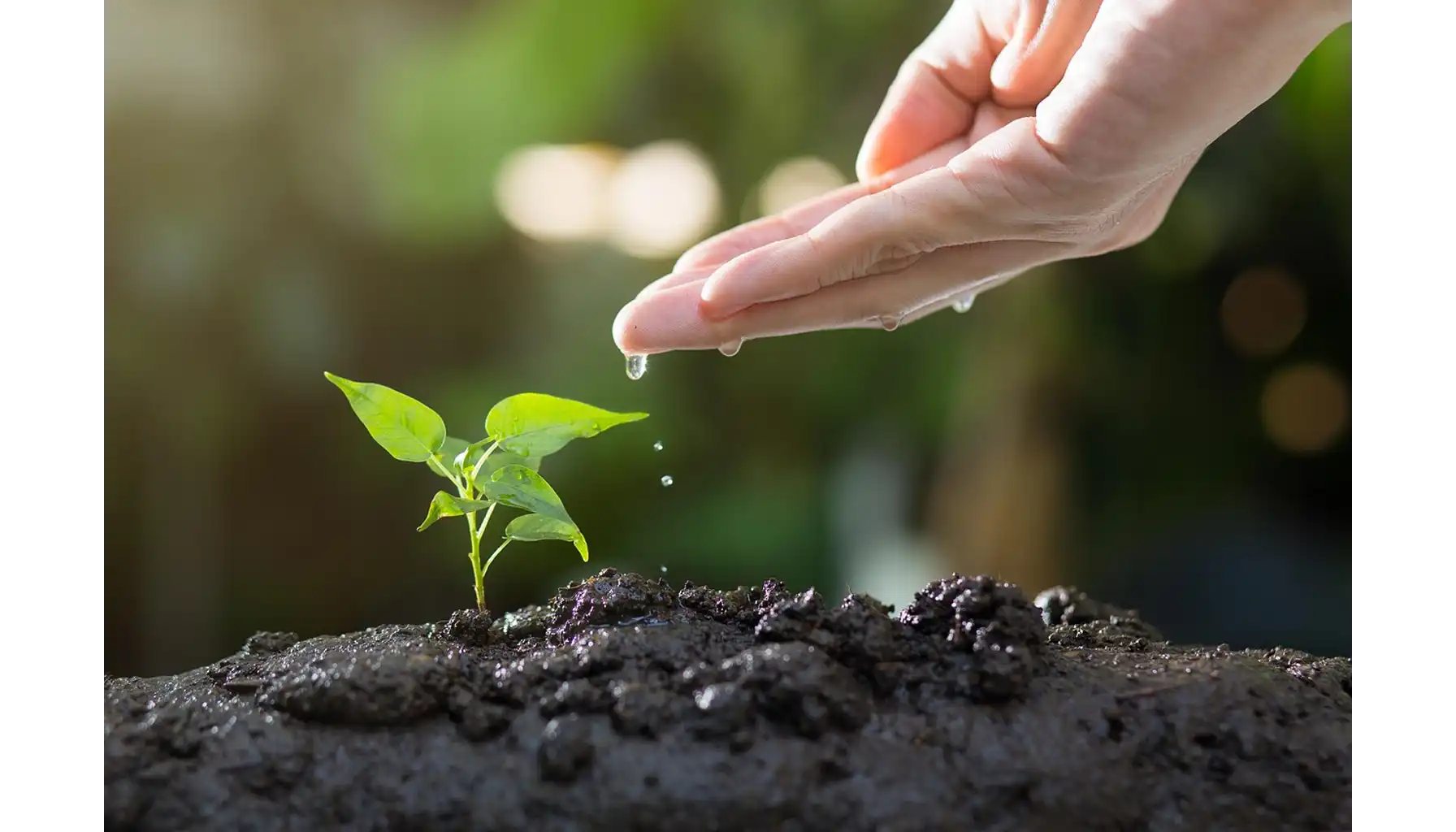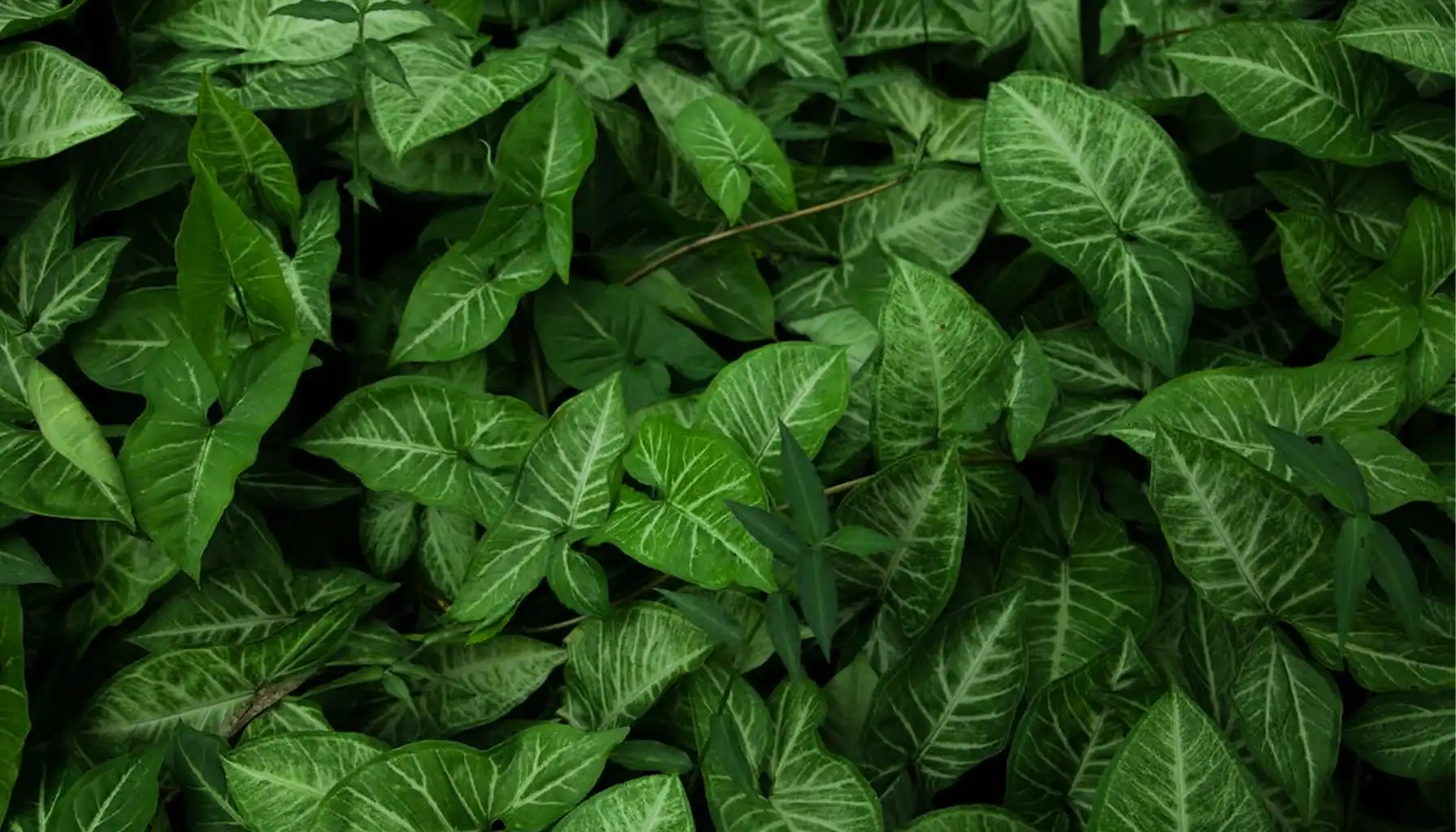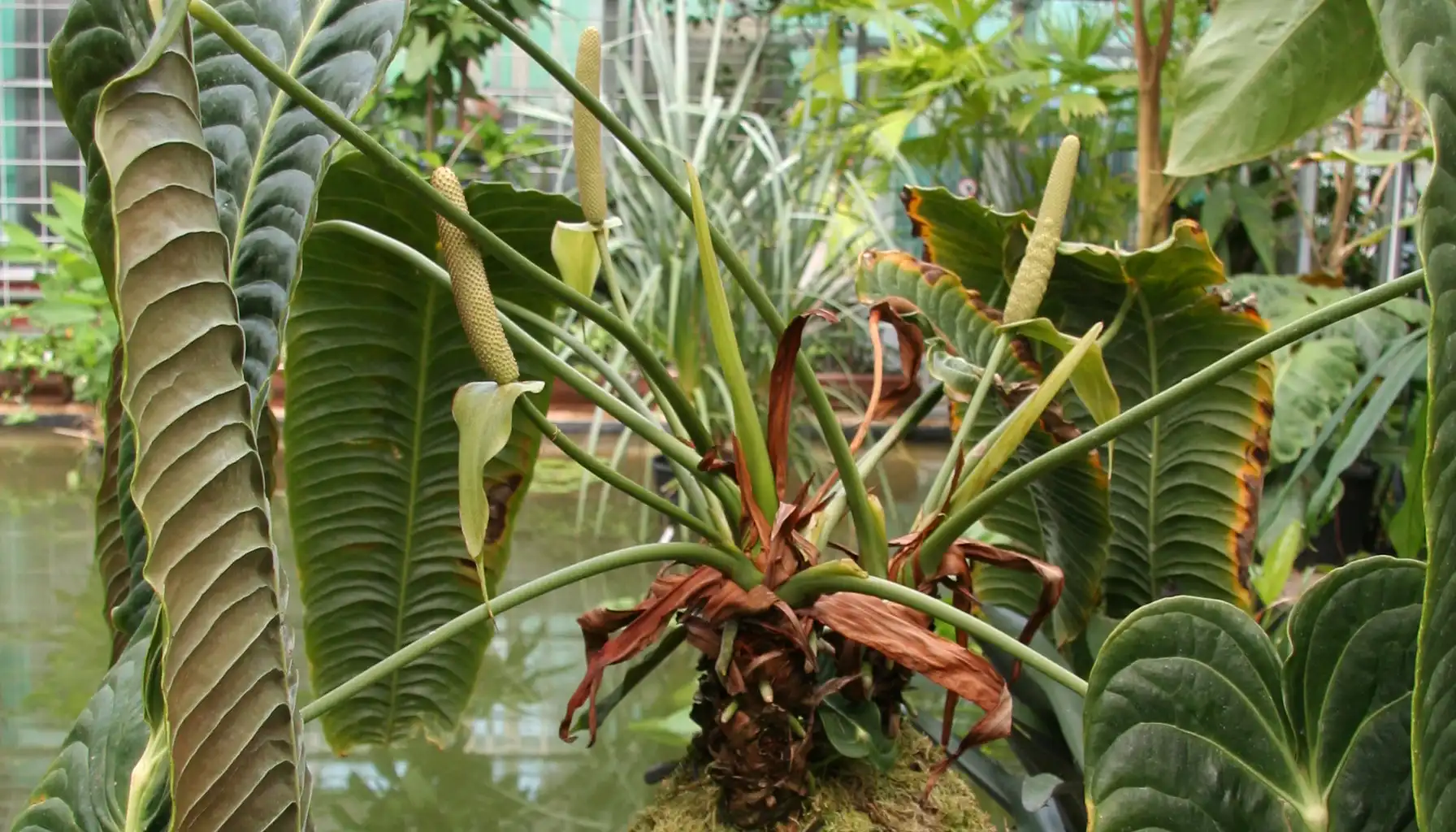For those looking to add an exotic plant with a unique texture to their home, Alocasia melo is the perfect choice. This compact member of the Araceae family is native to the state of Sabah on the island of Borneo, Malaysia.
The word “Melo” comes from the English word for melon, due to the resemblance of the plant’s thick, almost round, convex, and wrinkled leaves to the rind of a cantaloupe melon.
To ensure your melo Alocasia thrives, it’s important to consider its needs for light, water, and humidity. With the plant identifier, you can quickly confirm that your plant is an alocasia melo plant and determine the correct care.
Advanced Care for Alocasia Melo
Optimization of Lighting and Temperature
Alocasia melo light requirements suggest using bright, diffused light, but to achieve optimal growth, we recommend experimenting with artificial lighting, as different spectrums can influence growth.
Full spectrum lamps (6500K) with an intensity of 2000-4000 lux are ideal for melo light Alocasia, especially in regions with short daylight hours.
If you notice that the leaves are stretching or losing saturation, increase the duration of lighting to 12-14 hours per day. This is an important part of care for maintaining the health of the plant.
The plant is a good neighbor for shade loving plants, which also like soft light.
Set a timer for your lamps, this helps to mimic the natural cycle of the day.
For additional light, use highly reflective surfaces, such as white walls or mirrors. This will help increase the light without increasing the intensity.
Avoid sudden changes in lighting patterns, as this will lead to stress.
Maintaining a stable air temperature is one of the criteria for good maintenance. The place for the plant should be warm: not cool for it - not below 5°C, and not hot - not above 43°C. But, in principle, the flower is very resistant to temperature deviations in the smaller or larger directions.
Subtleties of Watering and Humidity
Alocasia melo care routine includes precise control of soil moisture. Use filtered or rainwater, as alocasia rugosa melo is sensitive to salts in tap water, and this allows you to precisely adjust the pH and EC values to suit your plants' needs. With stable pH and EC, your plants can absorb much more nutrients.
To maintain humidity at 60-80%, try placing the plant in a terrarium or greenhouse during the winter. If the leaves start to dry out at the edges, this is a sign of low humidity. Check the humidity level regularly with a hygrometer. Remember that overwatering is a big threat to this plant.
Water in the morning so that the leaves have time to dry by evening.
Use warm water (20-25°C) to avoid shock to the roots.
Group the plant with other tropical species to naturally increase humidity.
Provide good drainage in the pot so that excess water can freely drain to prevent stagnation and root rot.
Use pots with drainage holes and trays to collect excess water. If there is water left in the tray after watering, be sure to drain it after 20-30 minutes.
How do you know when to water a plant?
Place your finger or a wooden stick into the plant's soil
If your finger or stick remains wet and there is soil on them, do not water the plant
If your finger or stick is clean, it's time to water!
Varieties and Their Unique Features
Rare Varieties
Variegated alocasia melo and alocasia melo albo variegated are prized for their variegated leaves with cream or white patterns that require brighter light to maintain contrast.
Alocasia melo aurea has golden hues on its leaves, which are better revealed in above-average lighting. Melo albo alocasia can lose its variegation in low light conditions, so it’s often grown under phytolamps. Alocasia melo black attracts with almost black leaves with pronounced veins, creating depth in the interior.
Alocasia variegated melo: Requires 20% more light than the standard variety.
Melo aurea alocasia: Suitable for accent areas with soft lighting.
Fancy alocasia melo: The combination of texture and rare colours makes it a collector's item.
These varieties, like African milk, add exoticism to the collection, but require more careful care.
Size and Development
Alocasia melo growth is characterized by its compactness. Alocasia melo mature reaches 38-50 cm in height, and Alocasia melo full grown rarely exceeds 30 cm in width. Alocasia melo size makes it ideal for limited space.
In comparison, Alocasia melo large may appear larger due to its wide leaves, but the overall volume remains modest. The plant produces 1-2 new leaves per season, depending on the conditions.
Characteristic | Description |
Maximum height | 38–50 cm |
Maximum width | 25–30 cm |
Number of leaves | 4–8 at maturity |
Lifespan of leaf | 6–12 months |
Inflorescences grow in pairs on peduncles about 12 cm long. The cover that envelops the spadix is almost white in color, only the lower part is strewn with burgundy specks. The male and female zones are covered by the lower part of the cover.
The leaf blade is broadly ovate to almost round in shape. The size of an adult leaf is from 18 to 25 cm in length and 15 cm in width. The anterior part is 12.5-16 cm in length and ends with a short pointed tip. The posterior lobes reach 8.5 cm in length. They are 75-90% fused.
Propagation and Transplantation
Reproduction Techniques
Alocasia melo propagation via alocasia melo corm is the most reliable and convenient method. Corms, small nodules at the roots, can be separated during transplantation. To increase success, use a rooting hormone (e.g. Clonex) before planting the corm in sphagnum.
Maintain a temperature of 24-27°C and avoid direct light to stimulate rooting. Alternatively, corms can be germinated in water, but changing the water every 2-3 days is essential.
Use a clear container to monitor root growth.
Add 1-2 drops of hydrogen peroxide to the water to prevent rotting.
Once roots appear (2-3 cm), transfer to soil.
Transplantation Taking into Account the Root System
Alocasia melo large prefers tight pots, but repotting is necessary if the roots have filled the entire volume or the soil has compacted. Inspect the roots for rot - healthy roots are white and elastic.
If you notice dark or soft areas, cut them off with a sterile tool and treat them with charcoal. The new pot should have a drainage layer of expanded clay 2-3 cm thick.
Repot early in the growing season (March-April).
Make sure the new pot is 20% larger than the previous one.
After repotting, avoid direct light for 5-7 days.
Nutrition and Substrate
Fertilizers for Active Growth
For Alocasia melo entretien, choose a fertilizer with micronutrients such as magnesium and calcium, which support the texture of the leaves.
Liquid formulas with an NPK ratio of 10-10-10 or 7-9-5 are suitable for Alocasia rugosa melo.
Alternate mineral and organic fertilizers, such as fish emulsion, for nutrient diversity. Excessive fertilizer can lead to a build-up of salts, so flush the soil every 3-4 months.
Use half the dose to avoid burning.
Feed only during active growth.
Check the leaves for a white coating - a sign of excess salt.
Ideal Substrate
The substrate for alocasia melo should be loose and slightly acidic (pH 5.5–6.5). Adding charcoal (5–10%) prevents fungal infections, and vermiculite retains moisture without overwatering. Check the soil structure periodically – it should not be compacted.
Component | Percentage | Function |
Coconut fiber | 40% | Retains moisture |
Perlite | 25% | Improves aeration |
Pine or orchid bark | 20% | Provides drainage |
Charcoal | 10% | Protects against fungi |
Vermiculite | 5% | Regulates moisture |
Diagnosing and Troubleshooting
Specific Problems
Alocasia melo can suffer from improper care, but careful observation can quickly eliminate wilting:
Slow growth: Lack of nutrients or light. Check the fertilizer regime and move closer to the light source.
Soft leaves: Lack of calcium or overwatering. Add calcium fertilizer and improve drainage.
Spots on leaves: Fungal infections from high humidity without ventilation. Make sure there is good air circulation and if necessary, treat with fungicides.
Pest Control
Spider mites and scale insects are the main threats. Check the undersides of leaves weekly, more carefully in dry weather. Control with a 1:10 solution of alcohol or insecticidal soap, applied with a soft cloth. Prevention includes regular misting and maintaining humidity.
Wipe the leaves with a damp cloth once a month.
Use sticky traps for early detection of pests.
Isolate the new plant for 2-3 weeks before adding to the collection.
Flowering and Its Influence
Alocasia melo flower is a rare occurrence, but it can exhaust the plant by slowing down the growth of leaves. The inflorescences are nondescript spathes, which are best cut off to conserve energy. If you want to see flowering, provide stable conditions and avoid stresses such as temperature changes.
It all starts with the plant releasing a long arrow on which a flower is formed. The flower itself looks like a reed, initially wrapped in a delicate cover, like an ear of corn.
Over time, the cover opens, allowing pollination. The flower is self-pollinating, so even one alocasia can produce fruits similar to small sea buckthorn berries. Each berry contains several seeds.
Aesthetics and Placement
Fancy alocasia melo stands out with its texture, reminiscent of leather or plastic, which makes it a standout part of the interior. Place it on a stand or in a decorative planter to emphasize its compactness.
Use ceramic pots for stability.
Place at eye level for a better view of the leaves.
Combine with plants of different heights for a multi-level composition
Related AI Plant Finder Posts
